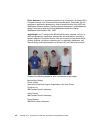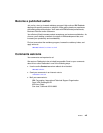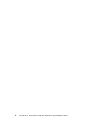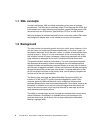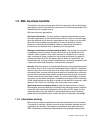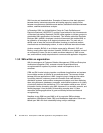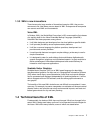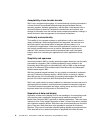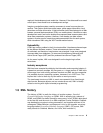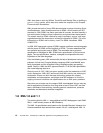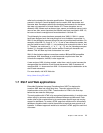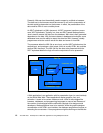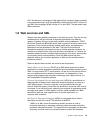6 The XML Files: Development of XML/XSL Applications Using WebSphere Studio
XML formats and standardization. Examples of these are inter-bank payment
between banks, insurance companies and trading agencies, supply-chains
between manufacturers, distributors and retailers, battlefield information between
soldiers, satellites and defence analysts.
In December 2000, the United Nations Centre for Trade Facilitation and
Electronic Business (UN/CEFACT) and the Organizations for the Advancements
of Standard Information Standards (OASIS) came together to initiate a project to
standardize XML specifications for business. This initiative called the Electronic
Business XML (ebXML) developed a technical framework that enabled XML to
be utilized for all exchange of all electronic business data. The main aim of
ebXML was to lower the cost and difficulties, focusing on small and medium
sized business and developing nations, in order to facilitate international trade.
Another example, BizTalk, is an initiative supported by Microsoft, SAP, and
Boeing, among other major vendors. However, BizTalk is not a standard, more of
an community of users. Its aim to enable consistent adoption of XML to ease
use, and therefore, easily adopt electronic commerce and application integration.
1.3.2 XML within an organization
With the emergence of Customer Relation Management (CRM) and Enterprise
Architecture Integration (EAI), customer oriented organizations have
re-engineered their systems to provide a whole new experience for the
consumer.
CRM and EAI involve bringing together a multitude of applications and systems
from multiple vendors to behave as a coordinate whole. The common thread
between all these applications is XML. Imagine trying to integrate information
from billing histories, customer personal information and credit histories,
distribution systems, and workforce management systems; and then displaying
them using browsers, databases, processes, and workflow systems on a variety
of technical platforms like mainframes, PCs, and medium sized servers. All this
information can be shared by using XML, because it is a versatile, powerful, and
flexible language. It has the ability of describing complex data. It is also
extensible, allowing applications to grow and develop without architectural
re-engineering.
Needless to say, IBM has used XML in all its new tools. IBM’s mainstay
applications: WebSphere Studio, DB2, and WebSphere Application Server are
based upon XML with their extensibility being a major advantage.



